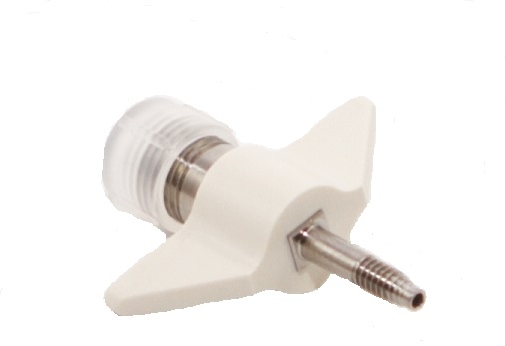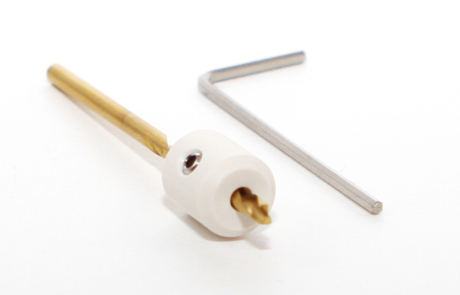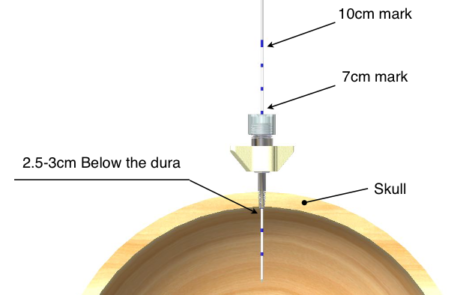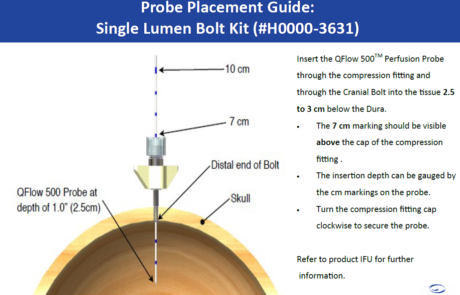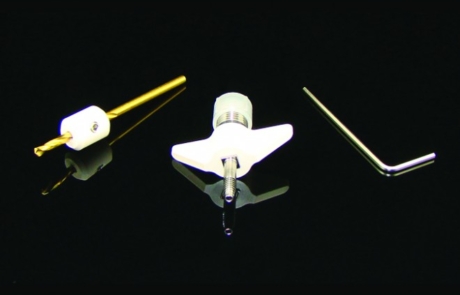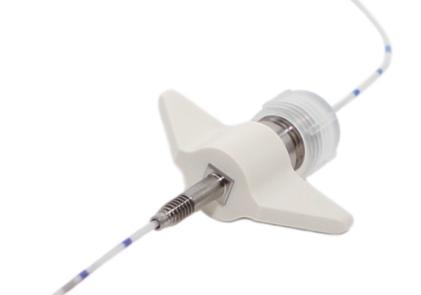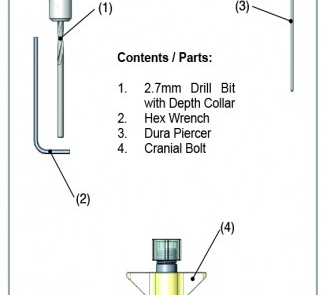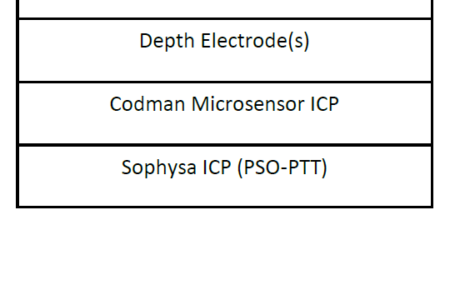- Provides single port access
- Other than a drill, requires no additional tools to insert or remove the bolt
- Made of titanium
- Secures the perfusion probe
- Easy to place
- Wing nut for easy threading
- Silicone sealing gasket
- CT compatible
- MR Conditional for static magnetic field of 3.0 T or less
Kit contains:
- Single Lumen Bolt
- 2.7 mm Drill Bit
- Depth Collar
- Hex Wrench
- Dura Piercer
What is the size of the lumen?
0.060″(1.5mm) in diameter.
Is the Single Lumen Bolt CT compatible?
Yes
Dimensionally Compatible Sensors*
- QFlow 500™ Perfusion Probe
- Depth Electrode
- Codman Microsensor ICP
- Sophysa ICP (PSO-PTT)
*Hemedex makes no claims with respect to the functionality and performance of any sensor other than the Hemedex QFlow 500 ™ Perfusion Probe.
Can the Single Lumen Bolt be used in an MR environment?
- Non-clinical testing has demonstrated the Hemedex QFlow 500™ Titanium Bolt Kit is MR Conditional. A patient with this device can be safely scanned in an MR system meeting the following conditions:
- Static magnetic field of 3.0 T or less;
- Maximum spatial field gradient of 8,610 G/cm (86.1 T/m);
- Maximum MR system-reported, whole-body averaged specific absorption rate (SAR) of 2 W/kg (Normal Mode).
- Under the scan conditions defined above, the Hemedex QFlow 500™ Titanium Bolt Kit is expected to produce a maximum temperature rise of less
than 0.3 ºC after 15 minutes of continuous scanning at 1.5 T and less than 0.6 ºC after 15 minutes of continuous scanning at 3 T. - In non-clinical testing, the image artifact caused by the device extends approximately 25 mm from the Hemedex QFlow 500™ Titanium Bolt when
imaged with a gradient echo pulse sequence and a 3 T MRI system. - Prior to transporting the patient to the MRI suite, remove all MR unsafe/conditional sensors that are not labeled for use in an MR environment.
- Hemedex recommends that the lumen be closed by tightening the compression fitting following the removal of any sensor.


